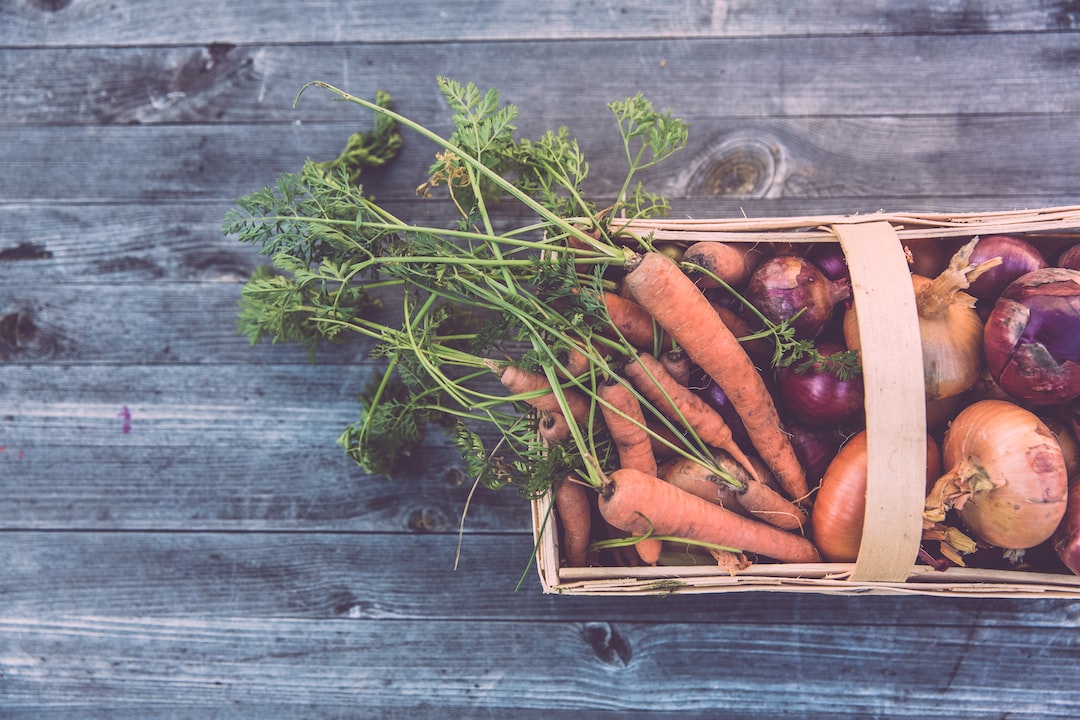Bariatric purée recipes are specially designed meals that have been blended to a smooth consistency, making them easier for individuals who have undergone bariatric surgery to consume. Bariatric surgery is a weight loss procedure that reduces the size of the stomach, limiting the amount of food that can be eaten at one time. After surgery, patients are required to follow a strict diet that gradually reintroduces solid foods. Purées are an important part of this diet as they provide essential nutrients while being gentle on the digestive system.
Incorporating purées into a bariatric diet offers several benefits. Firstly, they are easier to digest compared to solid foods, which can be challenging for individuals who have undergone bariatric surgery. The smooth texture of purées allows the body to absorb nutrients more efficiently, reducing the risk of discomfort or complications. Additionally, purées can help patients meet their nutritional needs while consuming smaller portions. This is particularly important after bariatric surgery, as the reduced stomach size limits the amount of food that can be eaten at one time.
Key Takeaways
- Bariatric purée recipes are a great option for patients who have undergone weight loss surgery and need to consume soft, easy-to-digest foods.
- Vegetable purées are a particularly good choice for bariatric patients because they are low in calories, high in fiber, and packed with nutrients.
- To make perfect vegetable purées, it’s important to choose the right vegetables, cook them properly, and use a high-quality blender or food processor.
- Some of the top vegetable purée recipes for bariatric patients include cauliflower and broccoli, carrot and ginger, and butternut squash.
- Adding protein to your vegetable purées is easy with ingredients like Greek yogurt, cottage cheese, or protein powder. You can also experiment with different spices and herbs to add flavor to your purées.
Why Vegetable Purées are a Great Option for Bariatric Patients
Vegetable purées are an excellent option for bariatric patients due to their numerous nutritional benefits. Vegetables are packed with essential vitamins, minerals, and antioxidants that support overall health and well-being. By incorporating vegetable purées into their diet, bariatric patients can ensure they are getting the necessary nutrients while keeping their calorie intake low.
Vegetable purées are also easy to digest for bariatric patients. After surgery, the digestive system is sensitive and may struggle to process certain foods. Vegetables, when cooked and blended into a purée, become soft and easily digestible. This allows the body to absorb the nutrients without putting additional strain on the digestive system.
Furthermore, vegetable purées are low in calories and high in fiber. This is particularly beneficial for bariatric patients who are looking to lose weight or maintain a healthy weight. The high fiber content helps promote satiety, keeping patients feeling full for longer periods of time. Additionally, the low calorie content of vegetable purées allows patients to consume larger portions without exceeding their daily calorie limit.
Tips for Making Perfect Vegetable Purées
When making vegetable purées for bariatric patients, there are a few tips to keep in mind to ensure optimal texture and flavor.
Choosing the right vegetables is crucial for a successful purée. Opt for vegetables that are naturally soft and easy to blend, such as carrots, cauliflower, broccoli, sweet potatoes, and spinach. These vegetables will yield a smooth and creamy texture when cooked and blended.
Cooking techniques also play a role in achieving the perfect purée consistency. Steaming or boiling vegetables until they are tender is the best method for preserving their nutrients while ensuring they are soft enough to blend smoothly. Avoid overcooking the vegetables as this can result in a mushy texture.
Investing in the right equipment is essential for making vegetable purées. A high-quality blender or food processor is necessary to achieve a smooth consistency. Make sure to blend the vegetables in small batches to ensure even blending and avoid any lumps or chunks.
Top 5 Vegetable Purée Recipes for Bariatric Patients
| Recipe Name | Calories per serving | Protein per serving | Fiber per serving | Carbohydrates per serving |
|---|---|---|---|---|
| Carrot and Ginger Purée | 70 | 2g | 2g | 12g |
| Butternut Squash Purée | 80 | 2g | 3g | 16g |
| Spinach and Broccoli Purée | 60 | 3g | 2g | 8g |
| Cauliflower and Leek Purée | 50 | 2g | 2g | 10g |
| Pea and Mint Purée | 70 | 3g | 3g | 12g |
1. Carrot and Ginger Purée:
– Ingredients: 4 large carrots, peeled and chopped; 1-inch piece of fresh ginger, peeled and grated; salt and pepper to taste.
– Instructions: Steam the carrots until tender. Transfer the carrots to a blender or food processor along with the grated ginger. Blend until smooth, adding water or vegetable broth as needed to achieve the desired consistency. Season with salt and pepper to taste.
2. Cauliflower and Parmesan Purée:
– Ingredients: 1 head of cauliflower, chopped into florets; ¼ cup grated Parmesan cheese; salt and pepper to taste.
– Instructions: Steam the cauliflower until tender. Transfer the cauliflower to a blender or food processor along with the grated Parmesan cheese. Blend until smooth, adding water or vegetable broth as needed to achieve the desired consistency. Season with salt and pepper to taste.
3. Broccoli and Cheddar Purée:
– Ingredients: 2 cups broccoli florets; ½ cup shredded cheddar cheese; salt and pepper to taste.
– Instructions: Steam the broccoli until tender. Transfer the broccoli to a blender or food processor along with the shredded cheddar cheese. Blend until smooth, adding water or vegetable broth as needed to achieve the desired consistency. Season with salt and pepper to taste.
4. Sweet Potato and Cinnamon Purée:
– Ingredients: 2 large sweet potatoes, peeled and chopped; 1 teaspoon ground cinnamon; salt to taste.
– Instructions: Steam the sweet potatoes until tender. Transfer the sweet potatoes to a blender or food processor along with the ground cinnamon. Blend until smooth, adding water or vegetable broth as needed to achieve the desired consistency. Season with salt to taste.
5. Spinach and Feta Purée:
– Ingredients: 4 cups fresh spinach leaves; ½ cup crumbled feta cheese; salt and pepper to taste.
– Instructions: Steam the spinach until wilted. Transfer the spinach to a blender or food processor along with the crumbled feta cheese. Blend until smooth, adding water or vegetable broth as needed to achieve the desired consistency. Season with salt and pepper to taste.
How to Add Protein to Your Vegetable Purée Recipes
Adding protein to vegetable purées is essential for bariatric patients as it helps support muscle growth and repair, aids in wound healing, and promotes satiety. There are several protein sources that can be easily incorporated into vegetable purées without altering the texture.
One option is to add protein powder to the purée. There are many plant-based protein powders available on the market that can be mixed into the purée during the blending process. This is a convenient way to increase the protein content without adding additional bulk or altering the flavor.
Another option is to add Greek yogurt or cottage cheese to the purée. These dairy products are high in protein and can be blended into the purée for added creaminess and flavor. Be sure to choose low-fat or non-fat options to keep the calorie content low.
Additionally, adding cooked and pureed chicken, turkey, or tofu to the vegetable purée is another way to increase the protein content. Simply cook the protein source separately and blend it with the vegetables until smooth. This will add a savory element to the purée while providing a significant protein boost.
Creative Ways to Flavor Your Vegetable Purées
![]()
While vegetable purées are nutritious on their own, adding flavor can make them more enjoyable and satisfying. There are several ways to enhance the flavor of vegetable purées without compromising their nutritional value.
Spices and herbs are an excellent way to add flavor to vegetable purées. Experiment with different combinations such as garlic and thyme, cumin and coriander, or basil and oregano. These spices and herbs not only add depth of flavor but also provide additional health benefits.
Incorporating different textures into the purée can also make it more interesting to eat. Consider adding toppings such as toasted nuts or seeds, crispy bacon bits, or a dollop of Greek yogurt. These toppings provide a contrast in texture and add a burst of flavor.
Using Seasonal Vegetables in Your Purée Recipes
Using seasonal vegetables in your purée recipes not only ensures freshness but also allows for variety throughout the year. Seasonal vegetables are typically more flavorful and nutrient-dense, making them an excellent choice for bariatric patients.
In the spring, consider using vegetables such as asparagus, peas, and artichokes in your purées. These vegetables are packed with vitamins and minerals and add a vibrant green color to the purée.
During the summer months, vegetables like zucchini, yellow squash, and bell peppers are abundant. These vegetables can be steamed or roasted before being blended into a purée, adding a burst of flavor and color.
In the fall, root vegetables like carrots, sweet potatoes, and butternut squash are in season. These vegetables are naturally sweet and lend themselves well to purées. They can be spiced with cinnamon, nutmeg, or ginger for added warmth and flavor.
Winter brings hearty vegetables like cauliflower, broccoli, and Brussels sprouts. These vegetables can be steamed or roasted before being blended into a purée, adding a comforting and satisfying element to the dish.
How to Store and Reheat Your Vegetable Purées
Proper storage and reheating techniques are essential for maintaining the quality and flavor of vegetable purées. Here are some tips to keep in mind:
– Store vegetable purées in airtight containers in the refrigerator for up to 3-4 days.
– If freezing, transfer the purée to freezer-safe containers or bags. Label them with the date and contents for easy identification.
– To reheat, thaw frozen purées in the refrigerator overnight. Alternatively, place the frozen purée in a microwave-safe dish and heat on low power until thawed. Heat the thawed or refrigerated purée on the stovetop or in the microwave until warmed through.
– Stir the purée occasionally during reheating to ensure even heating.
– Avoid reheating vegetable purées multiple times as this can affect their texture and flavor.
Frequently Asked Questions About Bariatric Vegetable Purées
1. Can I eat vegetable purées after bariatric surgery?
Yes, vegetable purées are an important part of the post-bariatric surgery diet. They provide essential nutrients while being gentle on the digestive system.
2. Can I add protein to vegetable purées?
Yes, adding protein to vegetable purées is recommended for bariatric patients. Protein helps support muscle growth and repair, aids in wound healing, and promotes satiety.
3. How long can I store vegetable purées?
Vegetable purées can be stored in the refrigerator for up to 3-4 days. If freezing, they can be stored for several months.
4. Can I reheat vegetable purées?
Yes, vegetable purées can be reheated. Thaw frozen purées in the refrigerator overnight or heat them on low power in the microwave until thawed. Heat refrigerated purées on the stovetop or in the microwave until warmed through.
Enjoying Nutritious and Delicious Vegetable Purées After Bariatric Surgery
Incorporating vegetable purées into a bariatric diet is a great way to ensure proper nutrition while maintaining a healthy weight. Vegetable purées are easy to digest, low in calories, and high in fiber, making them an ideal choice for bariatric patients. By following the tips for making perfect vegetable purées, experimenting with different flavors and textures, and incorporating seasonal vegetables, bariatric patients can enjoy a wide variety of nutritious and delicious meals. So why not give these recipes a try and start enjoying the benefits of vegetable purées today?

